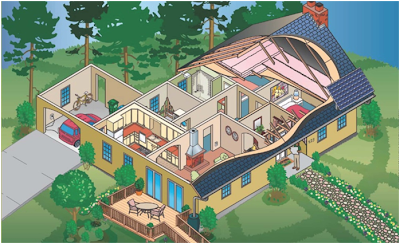To which we can add the corollary: ”and aging.” Baby Boomers, a major segment of U.S. demographics, are becoming senior citizens at the rate of 10,000 per day. With better health care and lifestyle choices, seniors are a fast-growing segment of our population, and will continue to grow for the next 20 years. By the year 2030, 25% of Clark County will be 60 or older. Aging is a reality that presents both challenges and opportunities to our communities.
Public agencies and non-profit groups across the country are trying to address these concerns. One prominent group in Clark County, the Commission on Aging has studied these issues and published an Aging Readiness Plan to address housing, transportation, and quality of community life as our population ages. Appointed by the Board of County Commissioners, the group’s plan was adopted earlier this year.

The Commission addressed the issues of livability that affect all of us: community design, access to parks and recreation, support services, and transit. But housing and independent living are particularly important for seniors. The Commission found that 85% of older adults want to remain in their homes as they age.
When residents stay in their homes, “the community retains its tax base and preserves neighborhood stability.” Likewise, with strains on government programs, staying at home is a less expensive option than living in a facility.
Now you may be among the Gen Xs or Millennials who are tired of hearing about the Boomer generation and wonder how this relates to our younger population. Well, there is a silver lining in this “silver” trend. Solutions to the housing and lifestyle needs of an aging demographic will reap direct benefits to the environment and our community as a whole, i.e., the Graying of America will contribute to the Greening of America. How so?
The Commission’s recommendations for housing follow the goals and guidelines of Universal Green Design (UGD). UGD is a long-term approach to building and remodeling that combines environmentally sustainable elements of green building with the flexibility of universal design. These goals are also compatible with the quality of life and independence goals for an aging population:
- Homes that meet a family’s changing needs as they grow older
- Homes where people of all abilities, ages, and sizes can thrive
- Energy-efficient homes that are cost-efficient for changing
incomes
- Single-level living with zero-step entrances
- Open floor plans and extra wide doorways and hallways for room to maneuver
- Energy efficient appliances with easy-to-read and operate controls
- Specific recommendations for every room to make them more senior-friendly
The net result is a home designed with a longer usefulness and lower environmental impact as family needs change.
So how does the Commission plan to mesh these high-minded goals with the reality of current housing conditions in the Northwest? For example, only 35% of homes in Clark County are single-level. With Urban Growth Boundaries in the Northwest, the focus has been on density at the expense of flexibility in design. Single-level houses typically require larger lots, working against those density targets. Compounding this challenge is the concern that we already have a shortage of residential lots in the region.[2] Suggestions to counteract this have included more creative housing design and reduced setbacks to maximize lot area. So will this require additional regulations or relaxing of zoning or building codes to satisfy the growing demand? In answer, the Commission specifically identified four challenges in senior housing: affordability, design, choice, and information. Each challenge is addressed with a corresponding short to long-term strategy – too many to list in this article, but worth reviewing in the Plan. The overall theme of many of the recommendations is public awareness, working with a long-term vision and the planning process, and educating builders and remodelers about the potentially huge market in building with UGD guidelines. The thinking is, rather than force regulation to bring about change, encourage the marketplace to create demand for UGD-designed homes with an eye for longevity and increased value.
In other words, today’s new generation of homebuyers can help shape the design and usability of housing for our aging population. Aging is inevitable, but if the marketplace embraces UGD, the Graying of America could contribute to the Greening of America.
27, 2012.http://www.oregonlive.com/frontporch/index.ssf/2012/07/builders_running_out_of_shovel.html
For more information on this topic, please contact marketing@jordanramis.com or call (888) 598-7070.

